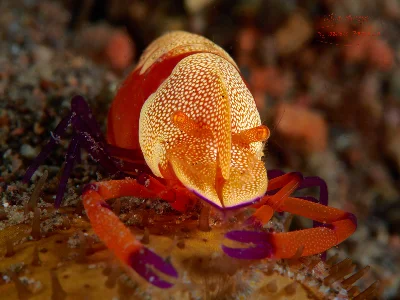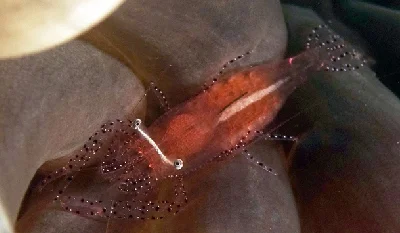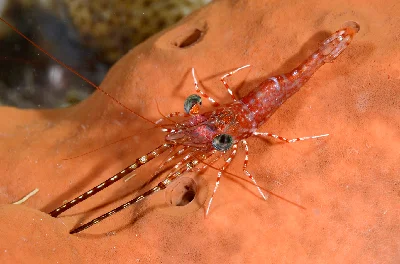Caridea
Shrimps are small crustaceans that belong to the order Decapoda and the family of Caridea. They are commonly found in both freshwater and saltwater environments, ranging from rivers and lakes to oceans all over the world.
Shrimps have a long, slender body with a protective exoskeleton that is typically colored in shades of pink, brown, or gray. They have two pairs of antennae, with the longer pair used for sensory purposes, such as detecting predators or finding food. Their eyes are located on stalks, providing them with a wide field of vision.
One of the most distinctive features of shrimps is their ten pairs of legs, with the first three pairs modified into claws or pincers. These claws are used for a variety of purposes, including defense, capturing prey, and cleaning. The remaining legs are used for walking and swimming.
Shrimps have a diverse diet, feeding on algae, plankton, detritus, and even small insects or fish. They play a vital role in marine ecosystems as both scavengers and prey for larger predators. Shrimps are also commercially important and are widely consumed as seafood in many cultures, particularly in dishes like shrimp cocktail, stir-fries, or shrimp scampi.
These creatures are known for their remarkable ability to adapt to various habitats, allowing them to thrive in a wide range of environments worldwide. Some species of shrimps, like the mantis shrimp, possess incredible hunting techniques and powerful appendages that can strike with tremendous force.
Shrimps exhibit diverse behaviors, depending on their species and environment. Some live individually, while others form large schools or colonies. They communicate through chemical signals, touch, and visual displays. During reproduction, female shrimps release eggs into the water, which are then fertilized by males. The larvae go through a series of stages before metamorphosing into miniature versions of adult shrimps.
Overall, shrimps are fascinating creatures that have captivated both scientists and seafood lovers for centuries. Their beautiful forms, fascinating behaviors, and ecological importance make them an intriguing part of the marine world.


















































